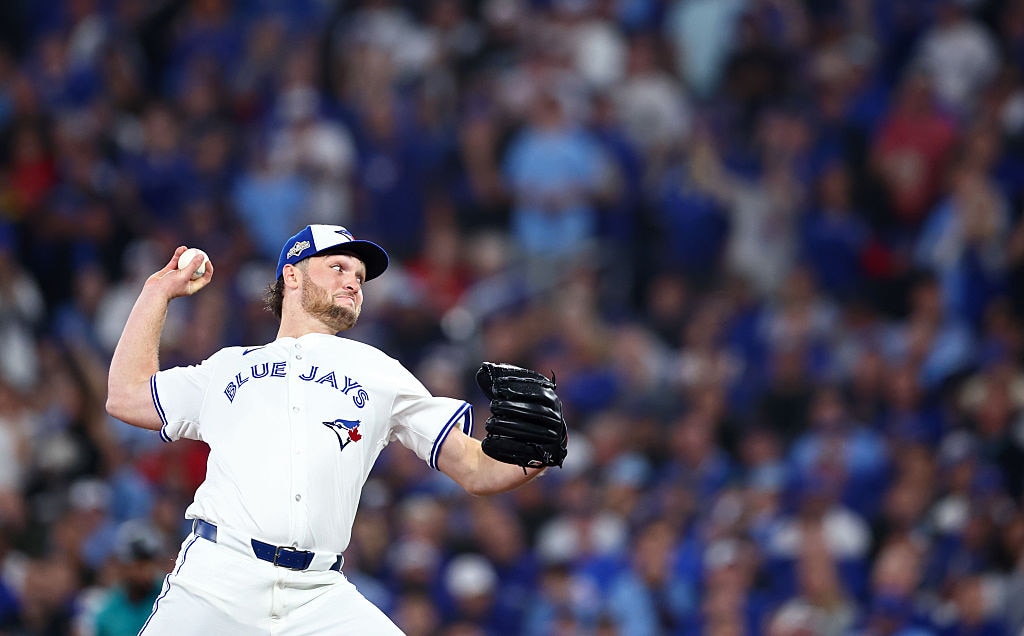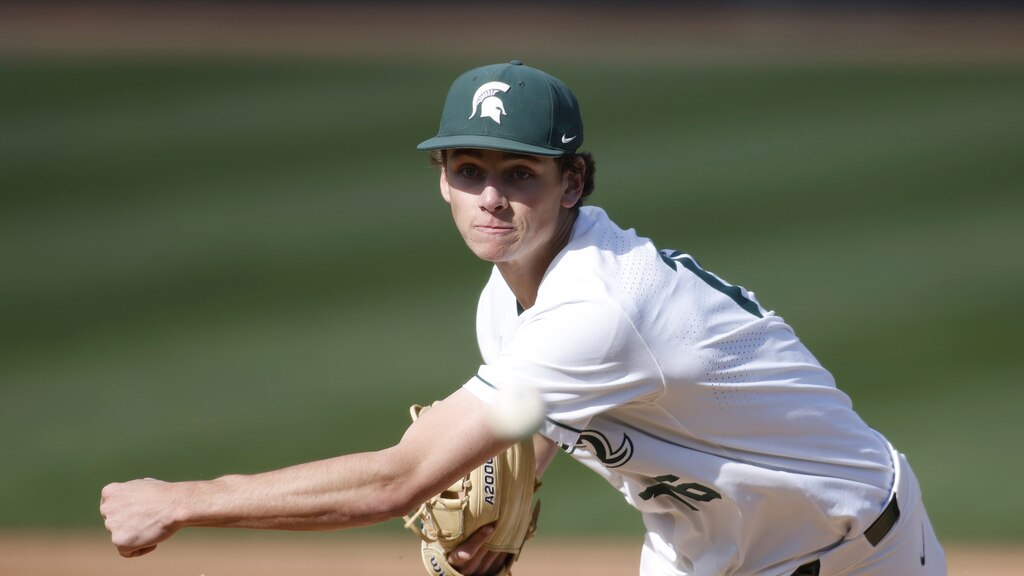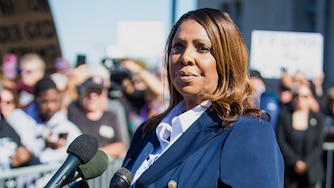TORONTO — They booed as manager John Schneider walked to the mound in the sixth inning Sunday night at Rogers Centre, a full-house crowd intent on still watching this electrifying phenom work. Those boos turned to applause once Schneider successfully removed the ball from Trey Yesavage’s right hand and the 22-year-old pitcher walked toward the Blue Jays’ dugout.
This had gone just about as well as anyone could have hoped from Toronto’s perspective — and not just on Sunday.
It goes back to the decision to even promote Yesavage in September, just over a year since the Blue Jays drafted him. It goes back to that 2024 draft, when Toronto committed a $4.1 million signing bonus for Yesavage once he was chosen 20th overall.

Those are risks. And those risks paid off handsomely Sunday, in the must-win Game 6 of the American League Championship Series against the Seattle Mariners that forced Game 7 on Monday.
Yesavage pitched 5 2/3 innings and allowed two runs, one of which scored after his replacement allowed a single. It was a series of choices that led Yesavage to the mound for the largest game of his life, and if the Orioles were watching, they will have noticed a very different tactic than the one they generally employ.
The Blue Jays rapidly promoted Yesavage, who started the year at Single-A Dunedin, and thrust him into this situation. The Orioles have largely avoided this type of daring strategy, both in terms of committing that kind of money to a highly drafted pitcher as well as promoting one with haste.
For all the focus on Baltimore’s seeming reticence to make a splash for a major rotation acquisition in the free agent market (the Orioles did submit a competitive offer to right-hander Corbin Burnes, but he still chose the Arizona Diamondbacks), the Orioles have also displayed a hesitancy to commit resources to a first-round pitcher under president of baseball operations Mike Elias.
Of course, the cautionary tales are riddled throughout baseball history, and several of them Elias can relate to with firsthand experience. The last time Baltimore drafted a pitcher in the first round, it was under different leadership.
The Orioles chose right-hander Grayson Rodriguez in the first round of the 2018 draft, and Elias has witnessed how injuries have thus far prevented Rodriguez from developing into the ace many hoped he would be (Rodriguez missed all of 2025 through elbow and lat injuries). But Elias’ negative experiences with highly drafted pitchers can go back further.
In 2014, when Mike Elias worked for the Houston Astros, the club selected left-hander Brady Aiken with the first overall pick of the draft. But he didn’t sign after Houston lowered its signing bonus offer, which stemmed from a physical revealing inflammation in the young hurler’s elbow.
Two years later, the Astros drafted — and signed — right-hander Forrest Whitley at No. 17 overall. He was designated for assignment this year after an injury-riddled tenure with Houston.
And in Baltimore, the Orioles selected right-hander Nolan McLean in the third round of the 2022 draft, but he didn’t sign, in part due to the results of his medical examination. (Since then, McLean was drafted by the New York Mets and debuted this season with a 2.06 ERA in 48 innings.)
“Baseball teams, particularly those not in the larger markets, we’re all very aware of the nature of pitching injuries right now, and some of the risk that naturally accompanies pitching investments and pitching contracts,” Elias said on the MLB Trade Rumors podcast this month. “And I mean pitching investments in free agency but also when you use a high draft pick on them or you make a big trade for a pitcher, there’s injury risk involved.”
But there’s also reward, and Yesavage showed as much.
Perhaps the Orioles are coming closer to investing in high-end young pitching talent, even with the absence of a first-round arm in their 2025 draft haul. Baltimore once again focused on college hitters early, then the Orioles selected left-hander Joseph Dzierwa 58th overall. Dzierwa became the highest-drafted pitcher of the Elias era, and he signed for just under $1.5 million.

There will always be an injury risk. To this point, Baltimore has opted to buy into another philosophy for maximizing their risk-reward matrix when it comes to pitching acquisitions. In 2024, then-director of pitching Chris Holt told The Baltimore Banner’s Jon Meoli:
“You can go look for the best player on the board or look for the best fit on what you can develop. I think we’re very clear on what we value. It doesn’t always necessarily mean a guy who’s a high-profile guy. We have a way of evaluating things on a very baseline level that allows us to zero in on who we like and why.”
The organizational approach, largely, has been to trust their development process to unearth a gem. At this point, though, right-handed reliever Kade Strowd became the first pitcher drafted under Elias to make his major league debut, and that occurred in Elias’ seventh season at the helm.
For Yesavage, this marked his sixth career start. Three of them have come in the postseason, including an 11-strikeout masterpiece against the New York Yankees in the American League Division Series. On Sunday, Yesavage struck out seven batters. And behind him, the Blue Jays infield helped turn a trio of critical double plays.
That instant success is not a guarantee. Just ask right-hander Kevin Gausman, who began his career in Baltimore only to flourish into a high-level starter elsewhere, and now in Toronto.
“No, I really couldn’t, if I’m being honest,” Gausman said when asked if he could imagine himself, at 22, stepping into that stage and performing the way Yesavage did.
“He’s been incredible for us and exactly what we needed,” Gausman, 34, continued. “Just kind of lived up to the hype, too. We heard about this guy all year. He’s punching out everybody in the minor leagues. I don’t think anyone really thought he was going to be here, but man, he’s taken the opportunity and ran with it.”
It’s almost unheard of for a player to go from Single-A to the majors in one year the way Yesavage did. That’s playing in four minor league levels, then reaching a fifth, the majors.
Baltimore has a track record of aggressive promotions among their minor leaguers. Right-hander Trey Gibson rose three levels this season. Infielder Jackson Holliday rose from Low-A to Triple-A in 2023. But the final step in that path, reaching the majors, has been a more slow-coming achievement.
“The transition from Triple-A to the majors, I can’t prove this, but it seems to be a widening gap,” Elias said on that podcast. “It makes sense that it is. The major leagues are just a really elite level of play right now. … When you move from Triple-A to the majors, you’re encountering a lot of players who are several levels, so to speak, better than you, because there’s nowhere else for the elite players to go.”
The Orioles, then, are more careful in how they unveil a prospect to the majors. Even so, the results have been spotty.
But if the Orioles aren’t going to be major players for a splash free agent signing — where deals not only cost a great deal per year but last many years — then the elevation of their rotation may need to come via the draft.
The signing bonus is an up-front cost. There’s a chance injuries derail all of the future hopes for the prospect. But if the stars align, and health remains intact, then for six years of that pitcher’s major league life, he’ll be cost-controlled and affordable.
The scene at Rogers Centre on Sunday showed the reward that can follow.




Comments
Welcome to The Banner's subscriber-only commenting community. Please review our community guidelines.